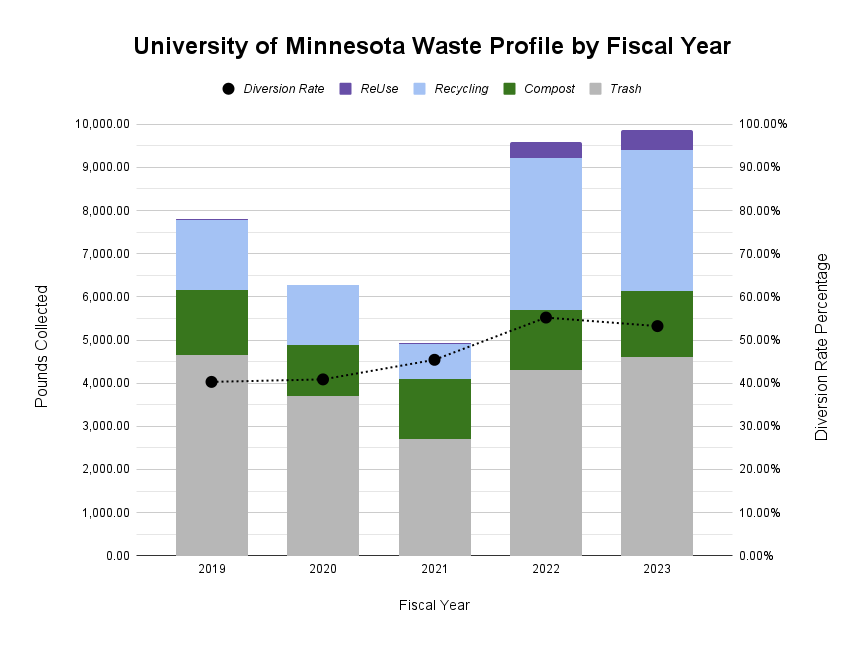At the University of Minnesota, we are committed to sustainability and environmental stewardship. A key aspect of our efforts is tracking and improving our waste diversion rate, which represents the total weight of materials—such as reuse, recycling, and compost—that are diverted from the waste stream (trash).
We closely monitor waste management on campus to benchmark our progress and enhance our sustainability initiatives. This webpage provides detailed data on our recycling and reuse programs, highlighting our dedication to reducing waste and promoting a sustainable future.

- Trash includes all material, that is transported to the Hennepin Energy Recovery Center (HERC).
- Reuse contains all surplus items collected and processed by the UMN ReUse Warehouse.
- Recycling includes paper, cardboard, plastic, metal and glass collected and processed.
- Compost includes food waste and other organic materials collected and processed for composting. This is also comprehensive of campus yard waste but not all animal and landscape material.
- Diversion Rate is the percentage of waste materials that are diverted from landfills and incineration through recycling, composting, and reuse efforts.